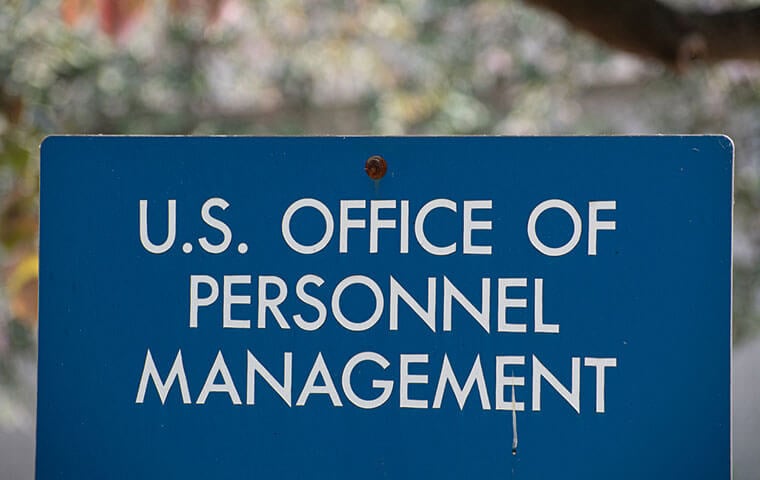 OMB has determined that agencies are authorized to direct employees to perform work necessary to administer the RIF process during the lapse in appropriations as excepted activities. Image: Douglas Rissing
By: FEDweek Staff
OMB has determined that agencies are authorized to direct employees to perform work necessary to administer the RIF process during the lapse in appropriations as excepted activities. Image: Douglas Rissing
By: FEDweek StaffUpdated guidance from OPM on federal employment policies in a partial government shutdown kicking off on October 1 —notably includes new material advising agencies that they may conduct RIFs during one, and giving them instructions on how to do so.
That follows an OMB memo telling agencies to use a shutdown as a justification for sending RIF notices to employees in functions whose funding lapses—regardless of whether they are furloughed or kept on the job unpaid—and, after funding is restored, to keep only the minimum number required to perform the legally required mission.
Says the OPM guidance, “an agency can run a RIF and may issue RIF notices . . . when preparing for a shutdown furlough. OMB has determined that agencies are authorized to direct employees to perform work necessary to administer the RIF process during the lapse in appropriations as excepted activities.”
Unions file lawsuit
The AFGE and AFSCME unions meanwhile filed a suit September 30 asking a federal court to block any such RIFs, asserting that “a lapse in funding does not repeal, vacate, or otherwise have any effect on statutory provisions requiring or authorizing agencies to perform specified functions.”
Further, the law allowing agencies to keep employees working during a shutdown for security, safety and similar reasons do not extend to work toward carrying out a RIF, the suit says.
Pay and benefits considerations
The guidance otherwise mainly reiterates longstanding policies on pay, benefits and other considerations, including that both employees who are furloughed and those who must continue working due to the nature of their jobs, but unpaid, are guaranteed they later will be paid.
“If the retroactive pay cannot be provided on the normal pay date for the given pay period, it must be provided at the earliest date possible after the lapse ends,” it says.
“Although the payroll for the last pay period before the lapse will be processed potentially during the lapse, the minimum number of payroll staff necessary for this process will be excepted for the minimum time required to issue the checks, including checks for the last pay period before the lapse,” it adds.
The current biweekly pay period for most employees ends October 4, with pay for that period—covering at least through September 30—distributed about a week later, varying somewhat by agency.
Federal retirees will still receive their scheduled annuity payments on the first business day of the month, and OPM will continue processing pending applications, it says.
However, “If your agency or payroll center has not yet submitted your retirement application or the application is incomplete, you will likely experience some delay as OPM must wait on other agencies to submit all the information needed to process your retirement. Some functions of these agencies may not be operating during a Government shutdown.”
That could be of special interest due to the expected surge of retirements with the September 30 end of deferred resignation periods for many thousands of employees.
OPM Advises Agencies on Conducting RIFs During Shutdown
Updated Shutdown Contingency Plans Show Range of Impacts
Use Shutdown as Justification for More RIFs, OMB Tells Agencies
Unions Win a Round in Court Disputes over Anti-Representation Orders
Deferred Resignation Periods End for Many; Overall 12% Drop
Senate Bill Would Override Trump Orders against Unions
See also,
How to Handle Taxes Owed on TSP Roth Conversions? Use a Ladder
The Best Ages for Federal Employees to Retire
Best States to Retire for Federal Retirees: 2025

